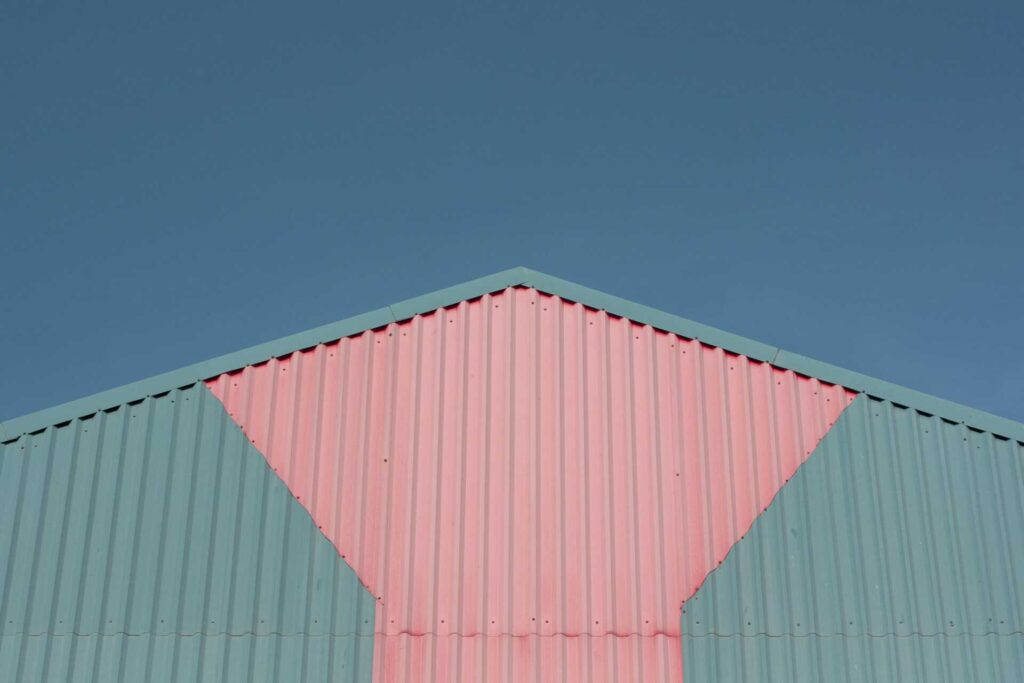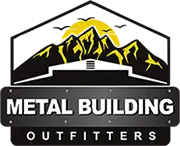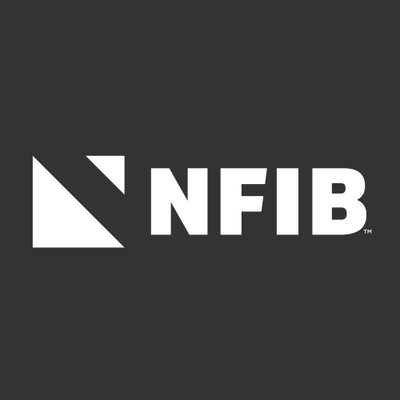
Contents
When it comes to metal building construction, choosing eco-friendly practices isn’t merely a trend; it’s a necessity in today’s environmentally aware world. By embracing environmentally friendly strategies, you contribute to a greener planet and pave the way for smarter, more future-proof structures. The benefits extend beyond just aesthetics or compliance; they encompass resilience, efficiency, and even potential cost savings. So, why should you think about eco-friendly practices for your metal building projects? The answer lies in a transformative journey towards a more eco-conscious and responsible construction industry.
Key Takeaways
- Energy-efficient metal buildings reduce operational costs and promote environmental responsibility.
- Sustainable practices enhance the durability and resilience of metal structures.
- Incorporating eco-friendly materials reduces carbon footprint in construction.
- Green building certifications increase market value and attract eco-conscious clients.
- Sustainable metal construction contributes to a healthier indoor environment and long-term cost savings.
Energy-Efficient Insulation Options
Consider using high-quality, environmentally friendly insulation materials to improve the energy efficiency of metal buildings. Reflective roofing, which reflects sunlight away from the building and reduces heat absorption, is a key component in this process. By choosing a suitable reflective roof, you can decrease the amount of heat transferred into the building, thereby reducing the need for excessive cooling during hot seasons. This simple yet effective method can lead to significant energy savings over time.
Aerogel insulation, recognized for its exceptional thermal performance, is another outstanding option for insulating metal buildings. This innovative material consists of a gel-based substance infused with air, making it extremely lightweight and an excellent insulator. Aerogel insulation demonstrates an impressive ability to reduce heat transfer, helping to maintain a comfortable indoor temperature while easing the strain on heating or cooling systems. Moreover, its durability and resistance to moisture make it a durable and dependable choice for insulation requirements.
Solar Panel Integration Benefits
Utilizing solar panel integration in metal building construction offers numerous benefits for energy generation and sustainability. By harnessing the power of the sun, you can greatly reduce your reliance on traditional energy sources, leading to substantial cost savings and positive environmental impact. Let’s explore the advantages of incorporating solar panels into your metal building:
| Benefits | Description |
|---|---|
| Cost Savings | Solar panels allow you to produce your electricity, reducing utility bills and potentially earning credits through net metering programs. Additionally, there are tax incentives and rebates available for solar installations. |
| Environmental Impact | Solar energy is clean and renewable, generating electricity without emissions or pollution. By using solar panels, you contribute to reducing carbon footprints and addressing climate change. |
| Energy Independence | Solar panel integration offers a level of autonomy from the grid, ensuring a stable energy supply even during power outages or interruptions. |
| Long-Term Investment | While the initial investment in solar panels may seem substantial, they have a long lifespan and require minimal maintenance, providing a dependable energy solution for years to come. |
Rainwater Harvesting Techniques
Rainwater harvesting in metal building construction involves the collection and storage of rainwater for various uses, promoting sustainability and resource efficiency. Implementing rainwater harvesting techniques aids in stormwater management and also contributes to water conservation efforts.
Here are four key methods for rainwater harvesting in metal building construction:
Storage Tanks: Utilize storage tanks to collect rainwater from the building’s roof, which can then be used for non-potable purposes such as irrigation or flushing toilets. This reduces the demand on municipal water sources.
Filtration Systems: Install filtration systems to remove debris and contaminants from harvested rainwater, ensuring its quality for applications like watering rooftop gardens or supporting urban agriculture initiatives within the building.
Incorporating Green Roofs: Implement green roofs as part of the building design to naturally absorb rainwater, reducing runoff and providing insulation benefits. This integration supports both rainwater harvesting and enhances the building’s overall sustainability.
Smart Irrigation Systems: Employ smart irrigation systems that utilize harvested rainwater for watering outdoor landscapes, promoting water efficiency and reducing reliance on traditional water sources.
Eco-Friendly Building Materials
How can metal building construction integrate eco-conscious practices through the use of environmentally friendly building materials? One effective way is by utilizing reused materials in the construction process. Incorporating reused steel, aluminum, or other metals diminishes the demand for new raw materials and minimizes waste and energy consumption associated with traditional manufacturing processes. By choosing reused materials, you can greatly lower the environmental impact of your construction project.
Another key aspect of eco-friendly building materials is energy-efficient construction. This involves using materials that help conserve energy, such as high-performance insulation, energy-efficient windows, and cool roofs. These materials can enhance the overall energy efficiency of the building, reducing the need for heating and cooling systems and lowering energy costs in the long run.
Additionally, sustainable practices like using responsibly sourced wood, low-VOC paints, and eco-friendly adhesives contribute to creating a healthier indoor environment for occupants.
Incorporating green building techniques benefits the environment and enhances the overall quality and sustainability of metal building construction. By choosing reused materials, focusing on energy-efficient construction, and implementing sustainable practices, you can create a more environmentally friendly and socially responsible building that aligns with eco-conscious values.
Passive Heating and Cooling Strategies
You can enhance energy efficiency in metal buildings through smart design choices, utilizing natural ventilation to reduce the need for mechanical cooling.
By strategically placing windows and vents, you can take advantage of cross ventilation and stack effect to maintain comfortable temperatures.
Additionally, incorporating materials with high thermal mass can help regulate indoor temperatures by absorbing and releasing heat as needed.
Energy-Efficient Building Design
Implementing passive heating and cooling strategies in energy-efficient building design can greatly reduce the need for active heating and cooling systems, thereby enhancing the overall sustainability of the structure.
To achieve ideal energy efficiency in your building design, consider the following key elements:
Building Orientation: Properly positioning your building can maximize natural light exposure and minimize heat gain, reducing the need for artificial lighting and cooling.
Energy-Efficient Windows: Installing high-performance windows with low-E coatings and insulated frames can improve insulation and reduce heat transfer, maintaining comfortable indoor temperatures.
Green Landscaping: Utilizing trees and vegetation strategically around your building can provide natural shading, reducing heat absorption and cooling costs.
Smart Technology: Incorporating smart thermostats, occupancy sensors, and automated controls can enhance energy usage based on occupancy and environmental conditions, further improving energy efficiency.
Natural Ventilation Benefits
Utilizing natural ventilation techniques can greatly enhance the passive heating and cooling capabilities of a building, optimizing its energy efficiency and reducing reliance on mechanical systems.
When properly harnessed through strategic window placement or skylights, natural light illuminates the interior while contributing to passive heating by harnessing the sun’s warmth. Healthy airflow, facilitated by cross ventilation or stack effect, helps maintain comfortable indoor temperatures without the need for excessive mechanical cooling.
By incorporating design elements that promote natural light and airflow, you can create a space that feels inviting and promotes well-being.
Strategic placement of windows and vents allows for the circulation of fresh air, reducing the buildup of pollutants and promoting a healthier indoor environment. Additionally, natural ventilation systems can help regulate humidity levels, preventing issues such as mold growth.
Embracing these passive heating and cooling strategies benefits the environment and enhances the comfort and livability of the building.
Thermal Mass Utilization
Strategically incorporating thermal mass materials in building construction can greatly enhance passive heating and cooling strategies, optimizing energy efficiency and reducing reliance on mechanical systems. Thermal mass benefits eco-friendly construction by absorbing and storing heat during the day and releasing it at night, moderating indoor temperatures.
Here are four key ways thermal mass utilization can benefit your eco-conscious metal building project:
Energy Efficiency: Thermal mass materials like concrete, brick, or stone can help stabilize indoor temperatures, reducing the need for active heating and cooling systems.
Cost Savings: By relying more on passive heating and cooling strategies through thermal mass utilization, you can lower energy bills and operational costs over time.
Comfort: The use of thermal mass can create more consistent and comfortable indoor environments by minimizing temperature fluctuations.
Environmental Impact: Embracing thermal mass benefits eco-friendly construction by decreasing carbon emissions associated with mechanical heating and cooling systems, contributing to a greener future.
Green Roof Installation Advantages
Installing green roofs on metal buildings offers numerous environmental and economic benefits. Green roofs are an inventive solution that can enhance the sustainability of metal buildings by providing insulation, reducing urban heat island effects, and promoting stormwater management.
One key advantage of green roof installation is its ability to manage stormwater effectively. By absorbing rainwater and reducing runoff, green roofs play a vital role in mitigating the impact of heavy rainfall events on urban infrastructure. This helps prevent flooding and ensures that the water is utilized efficiently for urban agriculture initiatives.
Moreover, green roofs contribute to urban agriculture by providing a space for cultivating plants and vegetables. This supports food production in urban areas, enhances community engagement, and fosters a sense of belonging among residents.
To highlight the advantages of green roof installation, consider the following table:
| Green Roof Advantages | |
|---|---|
| Environmental Benefits | Economic Benefits |
| – Stormwater management | – Energy cost savings |
| – Urban agriculture support | – Increased property value |
| – Reduced urban heat island effect | – Extended roof lifespan |
Daylighting Solutions for Savings
Consider implementing daylighting solutions in your metal building construction project to achieve cost savings through the efficient use of natural light. Daylighting can greatly reduce the need for artificial lighting during the day, leading to lower energy costs and creating a more eco-friendly building.
Here are some key strategies to enhance daylighting in your metal building:
Skylight Installation: Incorporating skylights in your metal building design can allow natural light to penetrate deeper into the space, reducing the dependence on electric lighting fixtures.
Smart Shading Strategies: Utilize shading devices such as louvers, blinds, or exterior shading structures to control the amount of sunlight entering the building, preventing glare and excessive heat gain while still maximizing natural light.
Light Reflective Surfaces: Choose light-colored interior finishes and surfaces that can reflect natural light deeper into the building, improving the distribution of daylight throughout the space.
Daylight Harvesting Systems: Implement automated daylight harvesting systems that adjust artificial lighting levels based on the available natural light, ensuring the best lighting conditions while minimizing energy consumption.
Recycling and Waste Management
Consider integrating efficient recycling and waste management practices into your metal building construction project to minimize environmental impact and promote sustainability. Waste reduction strategies play a significant role in sustainable construction practices, ensuring that materials are utilized efficiently and disposed of properly.
Implementing recycling initiatives is key to reducing the amount of waste generated during the construction process. By sorting materials on-site and sending them to recycling facilities, you can contribute to a more eco-friendly approach to building.
Efficient material disposal is essential in minimizing the environmental footprint of your construction project. Proper waste management reduces landfill waste and conserves resources by reusing materials where possible.
Utilizing recycled materials in your metal building construction can further enhance sustainability efforts. By repurposing materials such as steel and aluminum, you reduce the demand for new resources and decrease energy consumption associated with manufacturing new materials.
Integrating sustainable construction practices like effective recycling and waste management benefits the environment and enhances the overall efficiency of your project. By adopting these practices, you’re contributing to a greener future while setting a standard for responsible construction within your community.
LEED Certification Importance
Achieving LEED certification is necessary for demonstrating your metal building construction project’s environmental sustainability and energy efficiency. LEED, Leadership in Energy and Environmental Design, certification is a globally recognized symbol of sustainability achievement in building design and construction. Here are four reasons why obtaining LEED certification is vital for your project:
Environmental Impact: LEED certification guarantees that your metal building project meets strict environmental performance criteria. It showcases your dedication to reducing carbon emissions, conserving resources, and promoting a healthier indoor environment.
Energy Efficiency: Through LEED certification, you can implement energy-saving strategies in your metal building design and construction. This includes using renewable energy sources, optimizing insulation, and incorporating efficient lighting systems to minimize energy consumption.
Marketability: Achieving LEED certification enhances the market appeal of your metal building. It demonstrates to clients, investors, and stakeholders that your project aligns with sustainable practices and meets high-performance standards.
Cost Savings: While there are initial expenses associated with obtaining LEED certification, the long-term benefits include reduced operating costs due to energy savings, lower maintenance expenses, and potential tax incentives for sustainable construction practices.
Incorporating LEED certification into your metal building construction project benefits the environment and adds value and credibility to your endeavor.
Economic Benefits of Sustainability
Implementing eco-conscious practices in metal building construction can lead to significant economic benefits for your project. Choosing eco-friendliness opens the door to cost savings and financial advantages that can positively impact your bottom line. Let’s explore how these benefits can enhance your construction project:
| Economic Benefits of Eco-Friendly Practices | ||
|---|---|---|
| Cost Savings | Financial Advantages | Benefit Analysis |
| Lower energy costs due to energy-efficient designs and materials. | Access to tax incentives, rebates, and grants for environmentally-friendly projects. | Reduced long-term operating costs through efficient resource utilization. |
| Decreased maintenance expenses with durable, eco-friendly materials. | Increased property value and marketability. | Enhanced reputation and brand image leading to more business opportunities. |
| Efficient waste management leading to reduced disposal costs. | Improved occupant health and productivity. | Long-term savings on water and energy bills. |
Recap
Opting for eco-friendly practices for metal building construction is more than a decision but a requirement in today’s environmentally aware world. By integrating energy-efficient insulation, solar panel incorporation, rainwater harvesting, environmentally friendly materials, and other green strategies, you not only lessen your environmental footprint but also cut down on expenses and enhance property value.
The future of construction rests in sustainability, and by embracing these methods, you’re laying the groundwork for a more durable and effective built environment.
Recent Posts
Top Eco-Friendly Tips for Metal Building Construction
Have you ever wondered how metal building construction can align with eco-friendly practices? By exploring
What Techniques Enhance Energy Efficiency in Metal Buildings?
To improve energy efficiency in metal buildings, you need to encompass a variety of methods.
Top Tips for Energy Efficient Custom Metal Structures
When aiming to maximize the energy efficiency of your custom metal structures, it’s crucial to


